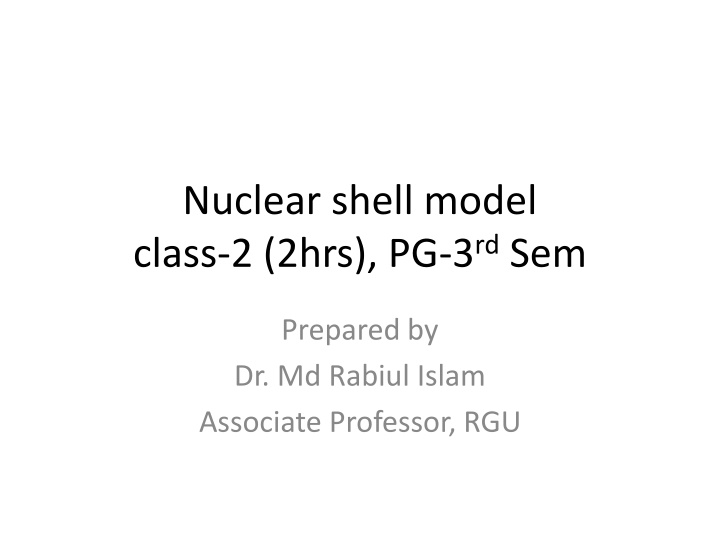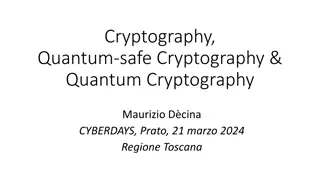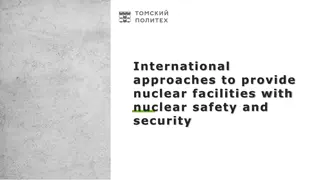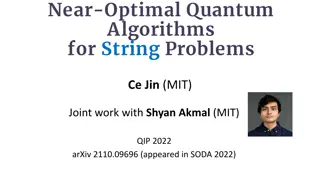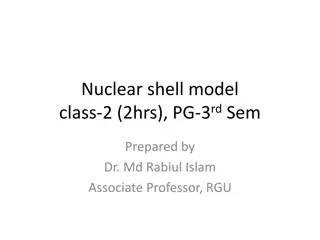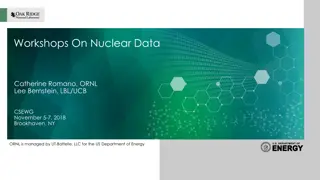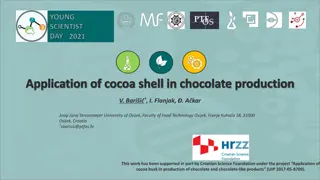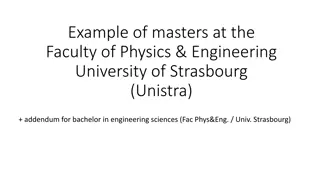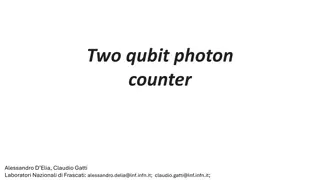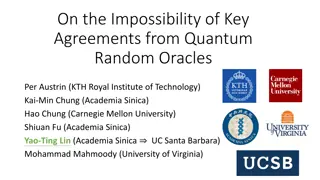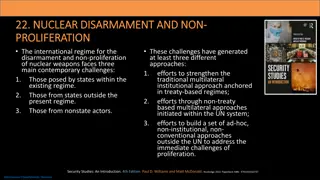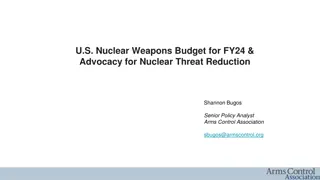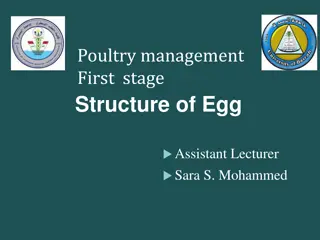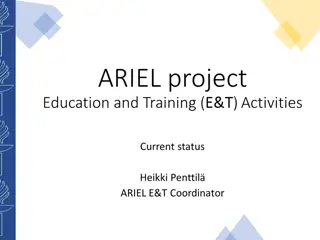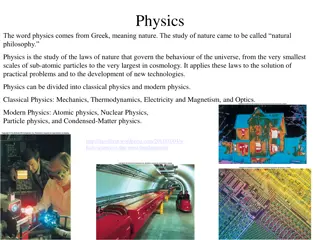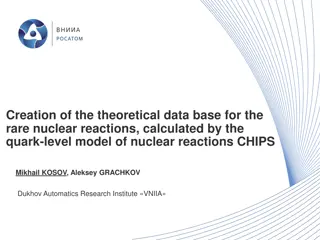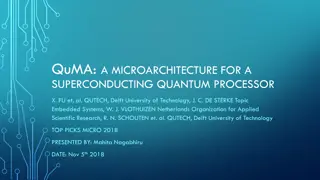Theoretical Derivation and Application of Nuclear Shell Model in Quantum Physics
Brought to you by Dr. Md. Rabiul Islam, Associate Professor at RGU, this presentation delves into the theoretical derivation of the shell model using Schrodinger wave equations in the presence of specific potentials. Exploring the solutions for the wave equation and explaining the role of quantum numbers in determining the behavior of nucleons, the content further discusses the impact of spin-orbit interactions on the energy levels of nucleons. The empirical relation for the observed energy spacing provides insight into the calculation of expectation values in the context of the nuclear shell model.
Download Presentation

Please find below an Image/Link to download the presentation.
The content on the website is provided AS IS for your information and personal use only. It may not be sold, licensed, or shared on other websites without obtaining consent from the author.If you encounter any issues during the download, it is possible that the publisher has removed the file from their server.
You are allowed to download the files provided on this website for personal or commercial use, subject to the condition that they are used lawfully. All files are the property of their respective owners.
The content on the website is provided AS IS for your information and personal use only. It may not be sold, licensed, or shared on other websites without obtaining consent from the author.
E N D
Presentation Transcript
Nuclear shell model class-2 (2hrs), PG-3rdSem Prepared by Dr. Md Rabiul Islam Associate Professor, RGU
Theoretical derivation of shell model:- Schrodinger wave in presence of potential of the form can be written as Using spherical polar co- ordinate system and then inserting the form of L2 operator we have
The above equation can be solved by separation variables (r, , )=R(r) Y( , ) And using the fact that L2Y=l(l+1) 2Y, the radial part of the wave equation takes the form The above equation will have well behaved solution if energy of the harmonic oscillator can have discrete values of the form a quantum number will satisfy the relation = 2n+l-2, wheren= 1, 2, 3, .... is the radial quantum no. l=0, 1, 2, .... is the orbital or azimuthal quantum no.
For a given l values there are 2(2l+1) number of nucleons. Table below gives the shows different states with energy values and number of nucleons Energy value E Degenerate states(n,l) No. Of nucleons Shell closure values 0 1 2 3 4 3/2 5/2 7/2 9/2 11/2 (1,0) (1,1) 2 6 2 8 20 40 70 (2,0) & (1,2) (2,1) &(1,3) (3,0) &(2,2) &(1,4) 2+10+18=30 2+10=12 6+14=20 5 13/2 (3,1) & (2,3) &(1,5) 6+14+22=42 112 6 15/2 (4,0) &(3,2) &(2,4) &(1,6) (4,1) &(3,3) &(2,5) &(1,7) 2+10+18+26 =56 6+14+22+30 =72 168 7 17/2 240
In order to explain the disagreement the spin-orbit interaction is taken into consideration. The spin orbit potential, which is non- central , can be written as Vls=- (r) l.s , Where (r)=b/r wrere f(r) is the spherically symmetric function giving the profile of the potential Total angular momentum of each individual nucleon can Since s can have values -1/2 or +1/2 ,j can have values j=l+1/2 , orj=l-1/2 these two levels now have different energies because of the strong spin-orbit coupling.
To calculate expectation values of Vls i.e < Vls> ,we have l.s=1/2{j(j+1)-l(l+1)-s(s+1)} Therefore < Vls>=-( l.s)< (r)> =-l/2 < (r)> = (l+1)/2 < (r)> for j=l-1/2 for j=l+1/2 Spin-orbit splitting of the two levels then ls=(l+1/2) < (r)> ,which is definite positive, implying that j=l-1/2 level is higher in energy level than j=l+1/2 The observed spacing is given by the following empirical relation ls= 20(l+1/2) A-2/3 Mev
For each j values there are (2j+1) number of nucleons. Using spectroscopic notations for different l values such as l values notations s 0 1 p 2 d 3 f 4 g 5 h
Initial levels splitting notation No.of shell nucleons closure 12............82 2 4 6 8 10.............50 2.........40* 6 4 8...............28 4...............20 2 6 1h11/2 3s1/2 2d3/2, 2d5/2 1g7/2 1g9/2 2p1/2 1f5/2 2p3/2 1f7/2 1d3/2 2s1/2 1d5/2 2.................8 4 1p1/2 1p3/2 1s1/2 2.................2
1st energy level corresponds to =0 , so n=1, l=0. Then only j=1//2 is present which is denoted as 1s1/2. Number of nucleons in this state is 2*1/2+1=2 2nd energy level corresponds to =1 , so n=1, l=1. Then there are two levels given by j=3/2 and j=1/2 which are denoted as 1p3/2 and 1p1/2 respectively. Number of nucleons in this state is 2*3/2+1=4 for j=3/2 and 2 for j=1/2 making total number of nucleons 6 in this level. Therefore 2nd shell closure occurs at nucleon number 2+6=8. 3rd energy level corresponds to =2, so n=1, l=2 and n=2, l=0. Then for l=2 there are two levels given by j=5/2 and j=3/2 which are denoted as 1d5/2 and 1d3/2 respectively. Other state 2s1/2 is non-degenerate. Number of nucleons in this state are 6+4+2=12. Therefore 3rd shell closure occurs at nucleon number 8+12=20.
For 4rth energy level =3 so the different states in this energy level is n=1, l=3, j=7/2 & 5/2 so the states are 1f7/2 & 1f5/2 n=2, l=1, j=3/2 & 1/2 so the states are 2p3/2 & 2p1/2 But splitting of energy level of 1f7/2 & 1f5/2 are such that 1f7/2 level is much lower than original energy level and forms a separate state. It has 8 nucleons so after 3rd shell closure at 20, next shell closure occurs at 20+8=28, which is the 4rth magic number. Remaining states of this level contains 12 nucleons so there will be shell closure at 40, which is a semi magic number.
Now considering the 5th energy level corresponding to =4 so the different states in this energy level is n=1, l=4, j=9/2 & 7/2 , so the states are 1g9/2 & 1g7/2 n=2, l=2, j=5/2 & 3/2 , so the states are 2d5/2 & 2d3/2 n=3, l=0, j=1/2 , so the state is 3s1/2 as before the state 1g9/2 will be so lowered that it eventually comes close to previous energy level. This state contains 10 nucleons. So after semi magic number 40 the next shell closure will be at 40+10=50, which is a magic number. Proceeding in the same way, remaining 20 nucleons in the 5th energy level plus 12 of the 1h11/2 state of the 6th energy level add up to close the next shell at 82, which is another magic number. Last magic number 126 for neutrons can also be explained in the same way.
Success and failure of Shell model:- Most successful application of shell model is the explanation of ground state spin of nuclei. To find the ground state spin of the nuclei, total angular momentum j of the individual nucleons have to be added. As we know an even number of nucleons of any kind in the same state j always combines to give the resultant I= j =0. Spin of the nucleus containing even number of protons and neutrons will be zero. For odd-even nuclei it is the last odd unpaired nucleon that contributes to the total spin of nucleus. For example : i) 3H1 (titrion) has Z=1 and N=2, therefore it is the single proton in the state 1s1/2 that contributes to the total spin I of the 3H nucleus. So the spin of 3H is I=1/2 , as observed experimentally.
ii) 7Li3 Z=3, N=4 , therefore out of 3 protons 2 will fill up the 1s1/2 state and the last one odd proton will be placed at the next 1p3/2 level. So the spin-parity of 7Li is 3/2- as observed experimentally. iii) 25Mg12 Z=12, N=13, therefore out of 13 neutrons, 8 will fill up to 2nd shell and remaining 5 will be placed 1d5/2 . 4 of these will be paired to contribute zero spin but the last unpaired neutron will only contribute to the total spin of 25Mg12. Observed spin-parity of the 25Mg12 nucleus is 5/2+ which again validates the applicability of the shell model. There are few exceptions, for example 19F9 and 23Na11 both should have spin 5/2 according to this model but experimental value of 1/2 and 3/2 respectively have been observed experimentally. Also pairing effect of the nucleons for higher l states lowers the corresponding energy level, so discrepancies are found between observed and theoretical values of nuclear spin for some elements. Single particle shell model can solve this problem.
Shell model can explain ground state magnetic moments of many nuclei. Though there are exceptions which can be explained using further revised model of nucleus. Existence of island of isomerism in the vicinity of magic numbers can be explained by shell model. Isomeric states are those nuclear excited state that have relatively long life time, very large difference of angular momenta between excited state and ground state but small differences of energy. For example 115In49 has Z=49, N=66, so its last odd proton will lie in 1g9/2 state giving its spin-parity 9/2+ . When one proton from 2p1/2 is raised to 1g9/2 , this sublevel is filled while there is one unpaired proton in the state 2p1/2. So the excited state has spin-parity 1/2-. The transition from the excited state to ground state involves large spin change I=4 as observed experimentally. The life time of this isomeric state is 14.4 hours. Electric quadrupole moment Q of the even-even nuclei for which spin I=0 should be zero as has been observed for few cases. However observed value of quadrupole moments of odd A nuclei are much more higher than calculated value based on shell model.
